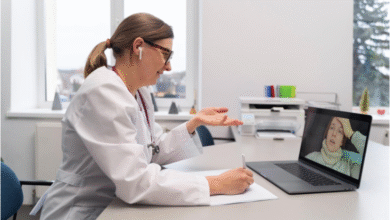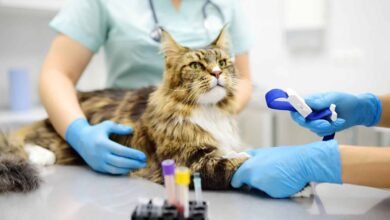Understanding Fecal Microbiota Transplantation (FMT)

What is a fecal transplant (poop transplant)?
Fecal microbiota transplantation (FMT) is a clinical manner to transplant a small sample of stool (feces) from a healthy colon right into a diseased colon. Every wholesome stool pattern incorporates thousands of useful microbiota which can improve the health of the diseased colon in a variety of approaches.
What is a fecal transplant (poop transplant)?
Fecal microbiota transplantation (FMT) is a clinical manner to transplant a small sample of stool (feces) from a healthy colon right into a diseased colon. Every wholesome stool pattern incorporates thousands of useful microbiota which can improve the health of the diseased colon in a variety of approaches.
Healthcare carriers presently prescribe fecal transplantation to treat an extreme bacterial infection for your colon. The transplant transfers a sampling of beneficial microbiota into the infected colon to help fight off the pathogenic ones. This useful microbiota can repair balance on your gut microbiome.
How does a fecal transplant work?
The sundry intestine is home to trillions of microorganisms, maximum of which can be beneficial. These beneficial microbes carry out many essential services on your body, along with stopping unhelpful germs from taking on. However, capsules, illnesses and different factors can damage and decrease your delivery of useful microbes.
Your intestine microbiome is a sensitive environment. whilst unhelpful microbes outnumber the beneficial ones, it throws the ecosystem out of stability. Fecal transplant is an easy and effective manner of restoring range on your biome. The heaps of useful microbes within a healthy poop sample repopulate your gut.
Puff Bars: Purchases, Opinions, and Consumer Insights
What illnesses can a fecal transplant treat?
Fecal transplant is currently endorsed and confirmed effective only as a remedy for continual C. difficile infection (CDI). C. diff is an invasive bacterium that can be proof against remedy with antibiotics. When antibiotics fall short, fecal transplantation is regularly a success in treating C. diff infection.
However, fecal transplantation can be beneficial for many other illnesses. Your intestine microbiome has wide-ranging results in your digestive system, your metabolism and your immune gadget. Healthcare carriers are researching fecal transplant as a possible treatment for lots conditions, along with:
- Inflammatory bowel disorder (or IBD, consisting of ulcerative colitis and Crohn’s disorder).
- Irritable bowel syndrome (IBS).
- obesity (weight reduction).
- Liver ailment.
- Diabetes.
- meals hypersensitive reactions.
- Autism spectrum disorder (ASD).
- anxiety issues.
- depression.
- multiple sclerosis (MS).
How commonplace is fecal microbiota transplantation?
Fecal microbiota transplantation continues to be a new and investigational treatment for C. diff contamination. Most healthcare companies simply prescribe it after different treatments have again and again failed. However, microbiota recovery treatments (MRTs) are normally taken into consideration for the future of C. diff treatment.
How is a fecal transplant finished?
Fecal microbiota can be added for your GI tract in a selection of approaches. Traditionally, healthcare providers have used exclusive methods in exceptional situations. Currently, best fecal microbiota therapies have been accredited with the aid of the U.S. meals and Drug management (FDA): an enema and an oral tablet.
Fecal transplant methods include:
Colonoscopy.
A colonoscopy entails passing a slender tube with a tiny camera connected into your colon through your rectum. The tube (colonoscope) progresses slowly from one give up of your gut to the alternative. Healthcare providers can supply therapeutics, which includes fecal microbiota, through the tube. This has historically been the favored approach for fecal transplantation.
Higher endoscopy.
A higher endoscopy passes a comparable tube (endoscope) out of your mouth or nostril, through your esophagus, and into your belly or small intestine. That is one opportunity for individuals who can’t have a colonoscopy. but it has a lower success charge due to the fact the microbiota should tour via your small gut so as to attain your colon, wherein they’re wanted.
Enema.
An enema grants therapeutics through a tube inserted into your rectum. Fecal microbiota can unfold out of your rectum up into your colon without risking any substantial change of surroundings, as they would to your small gut. The first FDA-accepted fecal microbiota therapy, RBL or Rebyota™ (fecal microbiota, live-jslm) is added through enema.
Oral capsule.
Fecal transplant tablets are pills containing freeze-dried, live fecal microbiota. The pills are designed to stay intact until they attain your colon. The most recent FDA-authorized fecal microbiota remedy, SER-109 or VOWST™ (fecal microbiota spores, stay-brpk) is an oral tablet containing many kinds of fecal-sourced microorganism spores referred to as Firmicutes.
What is the system for receiving the fecal transplant enema (RBL)?
There’s no instruction required for the fecal microbiota, live-jslm enema (RBL, Rebyota). You don’t need to put together your bowels with laxatives as you’ll earlier than a colonoscopy, and you won’t need anesthesia for the technique. This makes it on hand to a much broader range of people who may additionally want it.
You’ll receive the transplant in a single dose in your healthcare company’s office, within one to a few days after completing antibiotic therapy for C. diff infection. It only takes a couple of minutes. For the process, you’ll put on a health facility gown and lie on a table to your left side along with your knees bent in your chest.
The fecal transplant enema is available in a bag linked to a tube with a clamp. Your company will apply a lubricant inside your anus to make the enema more cozy. Then they’ll gently insert the tube (about five inches), release the clamp and raise the bag, allowing the contents to waft in with the aid of gravity.
Whilst the delivery is complete, your provider will withdraw the tube. You’ll continue to lie inside the equal function for about 15 minutes. This facilitates you to save you from cramping and leaking. A few providers may additionally come up with medicinal drugs to sluggish your bowels, to ensure the transplant remains internal long enough to take hold.
What’s the technique for taking the fecal transplant pill (SER-109, VOWST)?
You could begin taking SER-109 (fecal microbiota spores, live-brpk) oral pills via prescription within two to four days of finishing your antibiotics. You’ll take the prescription home with you. You’ll have one day of prep before starting. then you definitely will swallow four drugs a day for the subsequent 3 days.
The prep entails fasting and the use of a laxative formulation to clean out your bowels. The advised laxative is a magnesium citrate solution, although this might not be suitable for people with positive health conditions. test along with your healthcare issuer first if you have diabetes or persistent kidney ailment (CKD).
The laxative comes as a powder that you’ll mix with 10 oz. of water. You’ll drink this answer as a minimum 8 hours earlier than taking your first dose of SER-109. You’ll usually comply with it with at the least one full glass of water. After that, you’ll forestall eating and ingesting for the eight hours before taking your first dose.
The laxative will produce one to numerous bowel moves all through the subsequent 8 hours. through the following morning, your bowels must be clear and prepared to obtain your first dose of fecal microbiota. every of the subsequent 3 mornings, you’ll take your dose on an empty belly, before resuming food and drinks.
Where do fecal transplants come from?
Volunteer fecal donors provide stool samples for fecal microbiota transplant. Health conscious vendors rigorously screen volunteers before accepting them as fecal donors. They make sure the donor stool is freed from any infections or diseases. After collecting the stool (about 50 grams), they send it to a lab for processing.
How is poop processed for transplantation?
Fecal donations are combined with sterile saline and then filtered, generating a liquid solution. The liquid is probably used properly, specifically if it’s intended for a person mainly. If no longer, it goes to a donor bank. The pattern might be frozen to be thawed later, or it might be freeze-dried and put into capsules.
Read more: https://classroom6x.co.uk/virtual-branch-the-future-of-banking/
Who’re fecal transplant donors?
Your fecal transplant donor can be a person you realize, or they may be an anonymous donor who submits to a frozen donor financial institution. The 2 fecal microbiota merchandise presently approved by using the FDA are manufactured earlier. The producers supply, display and method their personal donor fabric.
What are the qualifications (or disqualifications) to end up a fecal transplant donor?
Fecal donor volunteers take blood checks and stool checks that screen for diverse gastrointestinal illnesses that are probably transferred with their stool. they will additionally take a urinalysis and oral clinical records. Volunteers can be dominated out as capability fecal donors if their assessment well-known shows any of the subsequent:
other invasive and/or antibiotic-resistant microorganisms, together with E. coli. Even supposing those bacteria are below the donor colon, they may cause an infection in an unhealthy colon.
Viral infections, including short-time period belly flu viruses and persistent infections like viral hepatitis, HIV and COVID-19. Even dormant Epstein-Barr virus may turn out to be energetic again.
- Intestinal parasites.
- current remedy with antibiotics.
- managed materials use.
- Inflammatory bowel illnesses.
- Autoimmune illnesses.
- Inherited metabolic issues.
- family history of cancer.
- risks / blessings
What’s the gain of fecal microbiota transplantation for C. diff contamination?
- diff is a common intestinal bacterium that lives in many wholesome colons without inflicting harm. handiest when the useful microbes in your gut are diminished does C. diff run rampant. Healthcare vendors apprehend that a healthful intestine microbiome is a crucial aspect in preventing and coping with this disorder.
Only some antibiotics can deal with C. diff contamination, and even these don’t constantly work. After they do paintings, they best kill the micro organism themselves, but now not the spores. As long as your gut microbiome stays weak, C. diff infection can return. In some humans, it returns time and again, coming back more potent each time.
With the aid of seeding other kinds of microorganisms on your intestine, fecal microbiota transplantation enables to reestablish a healthful gut microbiome that could arise to C. diff. These extra beneficial microorganisms compete with C. diff spores, stopping the contamination from returning after antibiotic remedy.
The FDA has approved fecal microbiota products mainly to prevent recurrent C. diff infection. These products come with a disclaimer that they aren’t approved to treat C. diff. That’s just to make certain that they aren’t the simplest remedy. The high-quality method is to use them following antibiotic remedy.
How successful is this treatment?
Success charges vary between special delivery strategies, but standard FMT is 80% to 95% a success in stopping C. diff contamination from routine after antibiotic treatment. This represents a crucial step forward within the treatment of recurrent CDI, which has been a severe medical task.
Are there any side consequences to the remedy?
You could revel in mild to moderate gastrointestinal (GI) symptoms after the treatment, like bloating and gasoline, nausea and vomiting, or belly discomfort. Some people get a fever and chills. Those are anticipated side consequences and shouldn’t be a motive for difficulty. They ought to pass within an afternoon or two.
Are there any extreme dangers related to fecal transplant therapy?
There’s a far flung however serious hazard that a fecal transplant could transfer a harmful pathogen to the recipient. bacteria and viruses that had been inactive or were nicely controlled within the donor’s body may emerge as active or spread out of manipulation inside the recipient’s body, due to their weakened circumstance.
Fecal transplant samples are fastidiously screened and processed to mitigate this threat. but since there aren’t yet standardized protocols for the screening or processing, it’s not possible to assure the safety of all fecal transplants. That is why the FDA has only approved two pick out fecal microbiota merchandise.
FDA approval means that these products have handled the vital scientific trials and evaluate procedures to be taken into consideration secure for healing use. Even as the labels on these products admit that a theoretical chance of infection remains, the products haven’t been observed to cause infections or other unfavorable effects.














